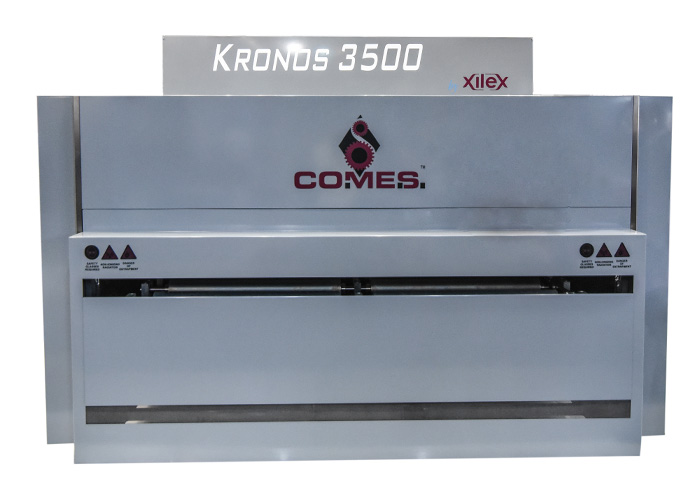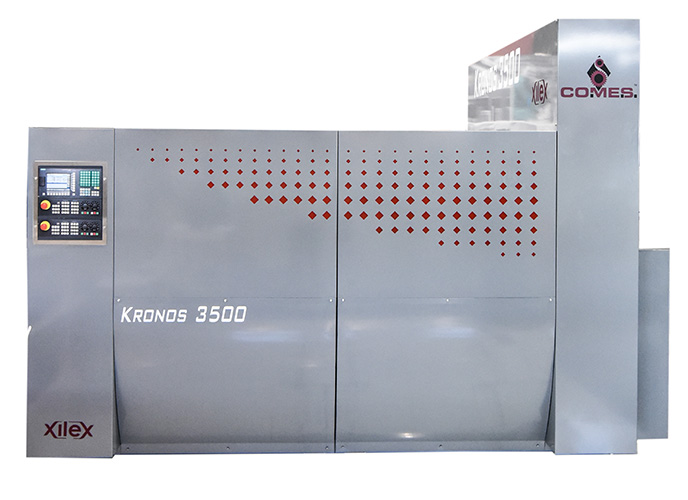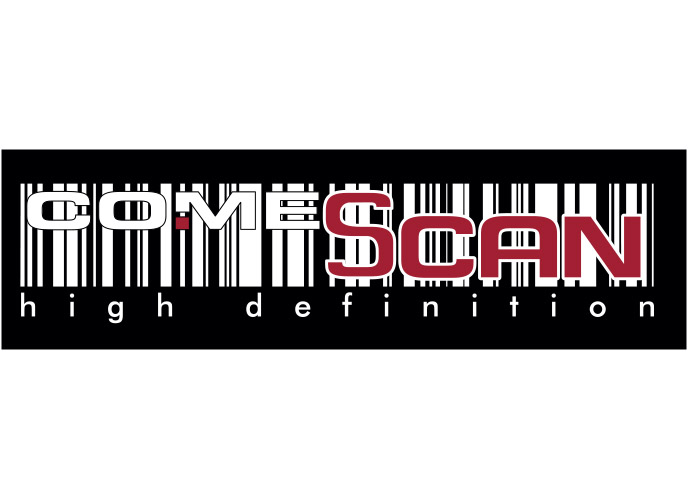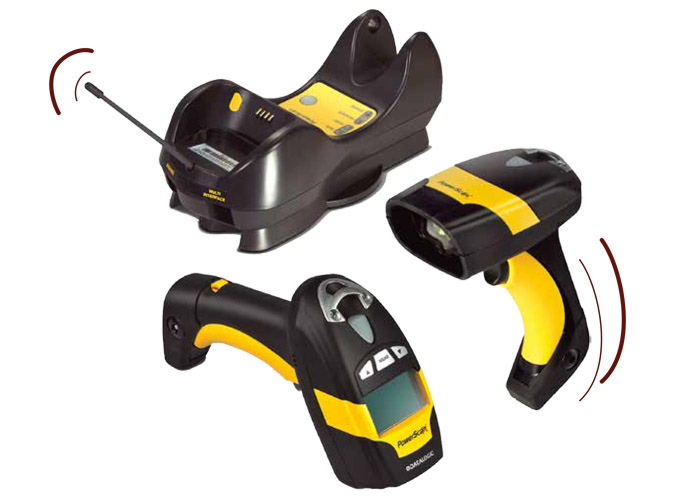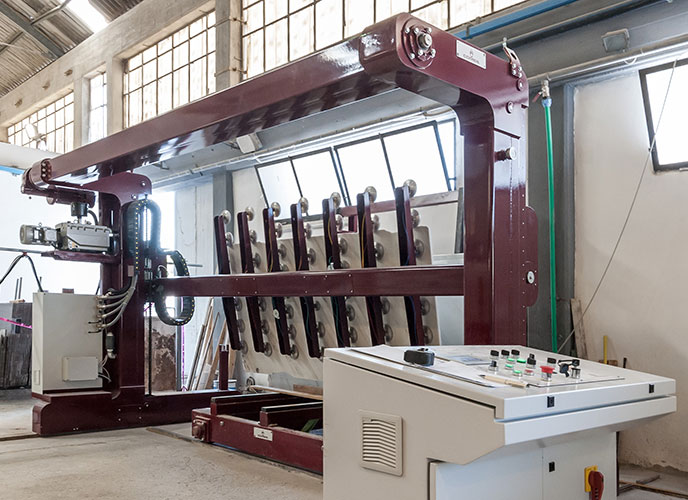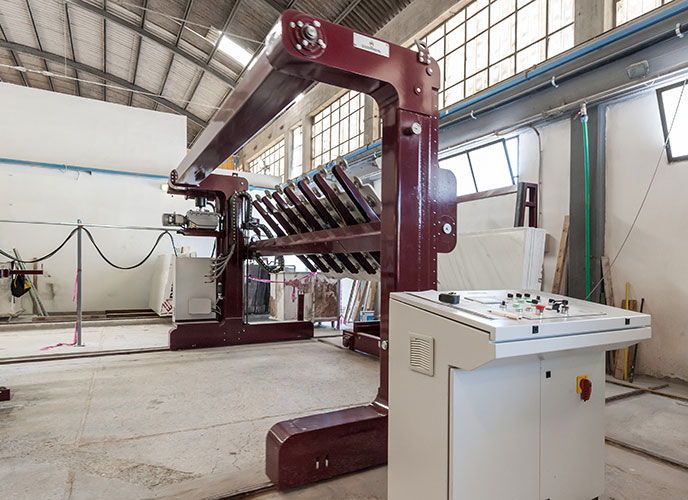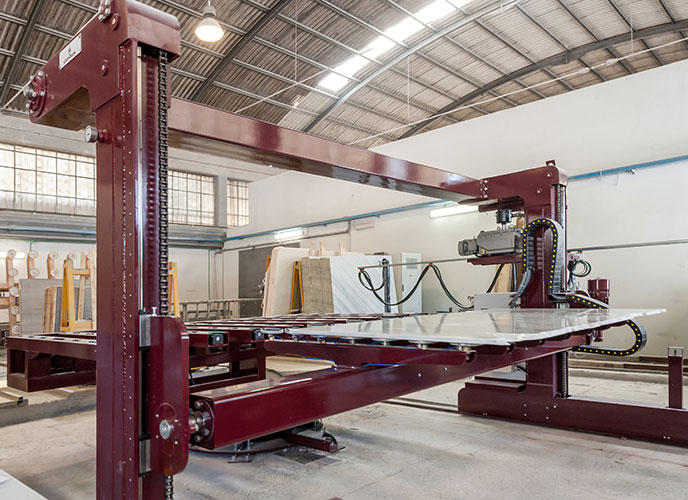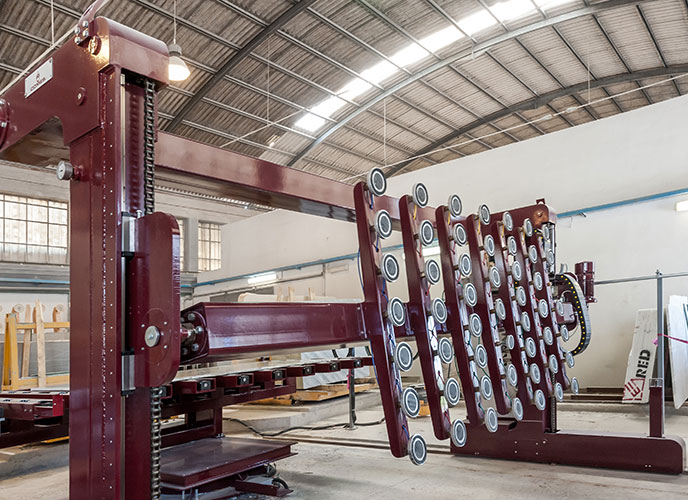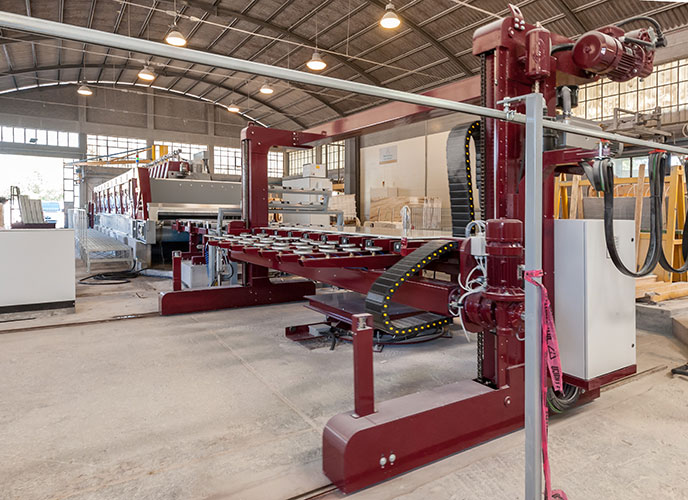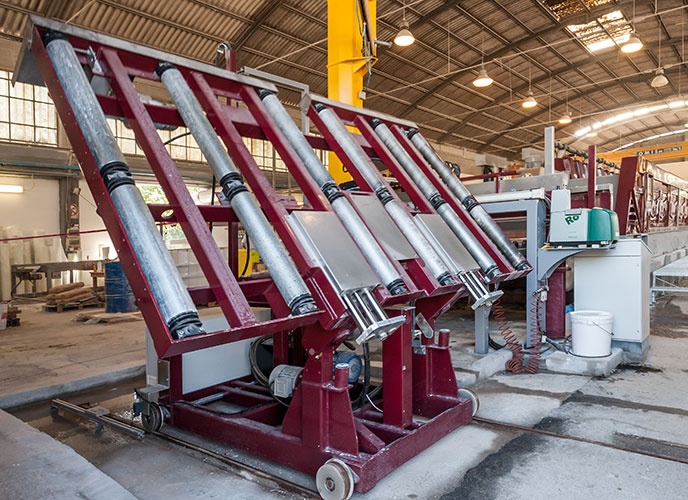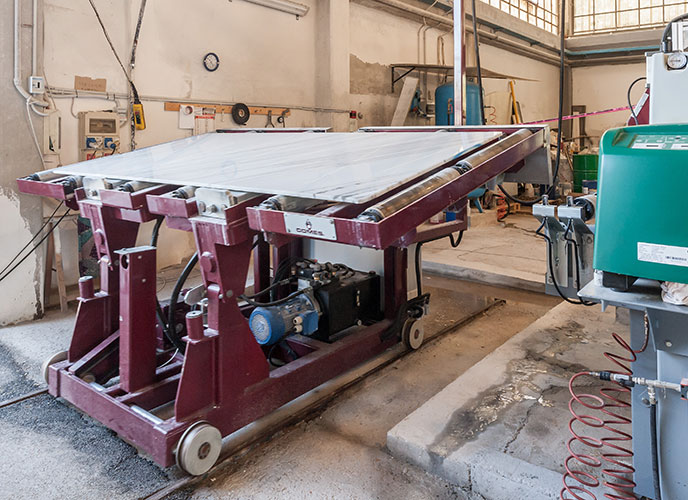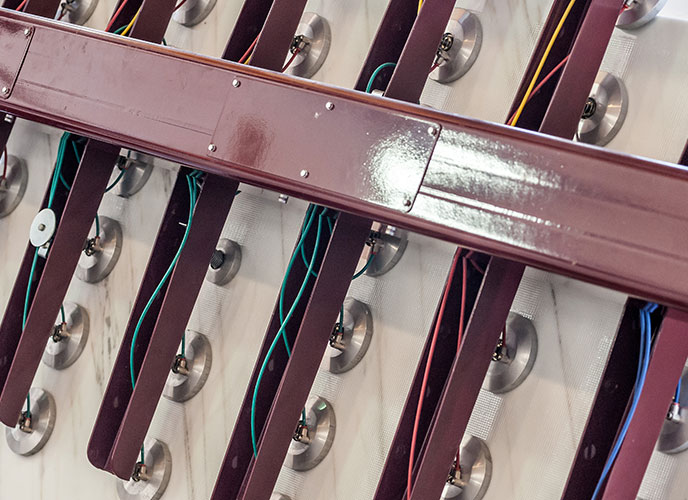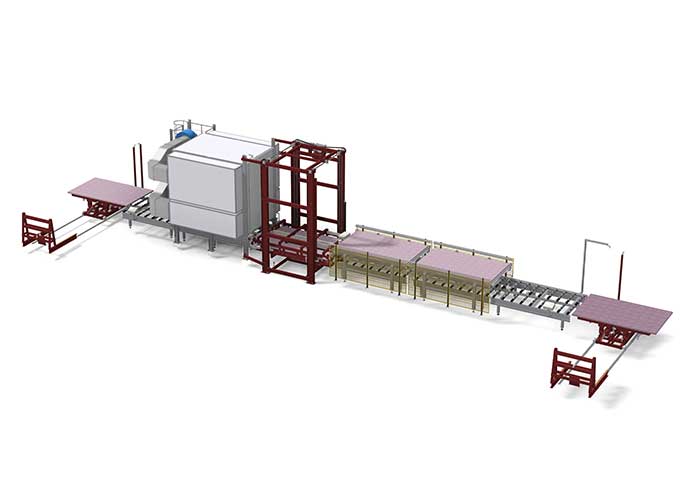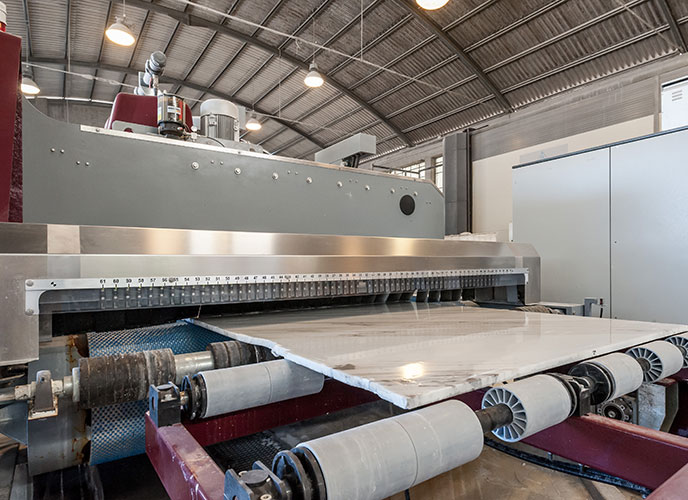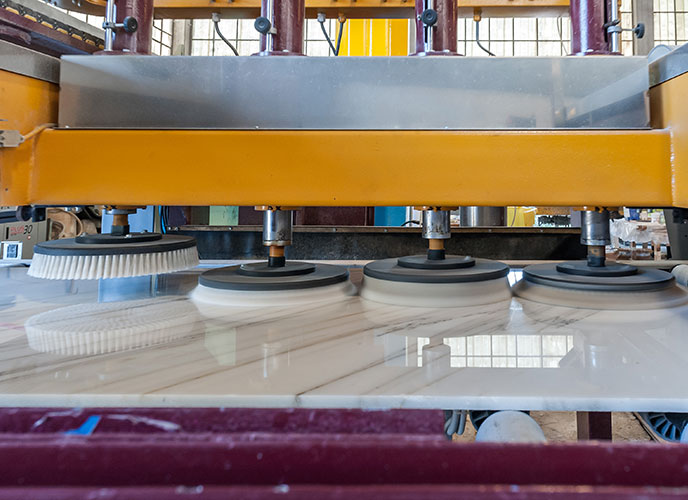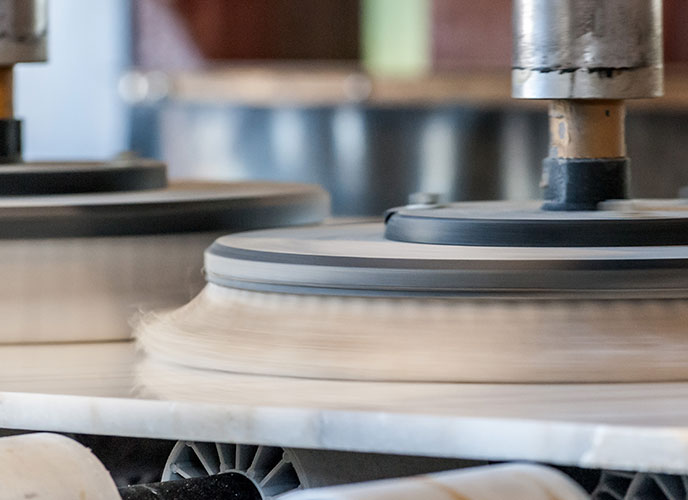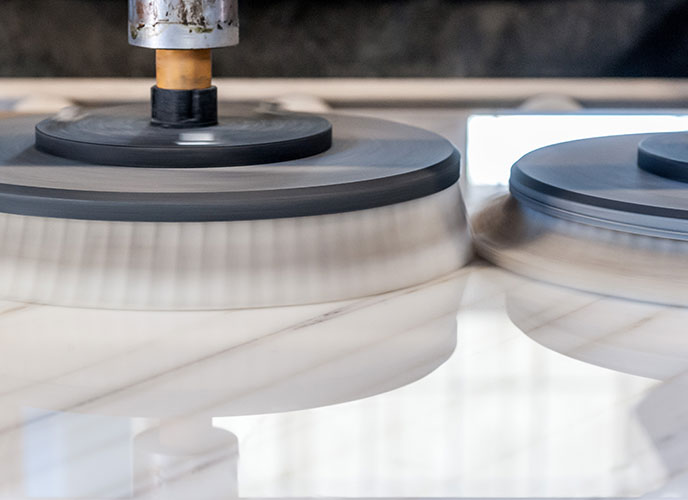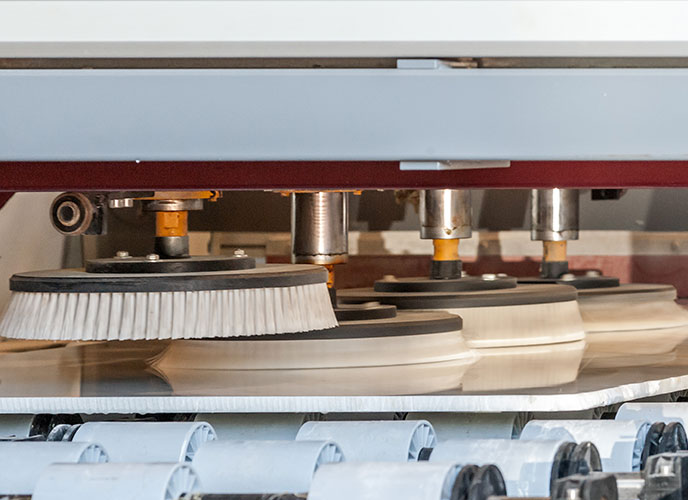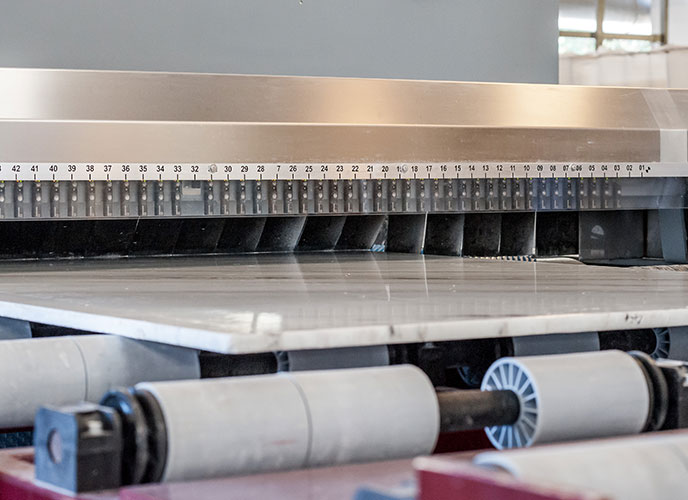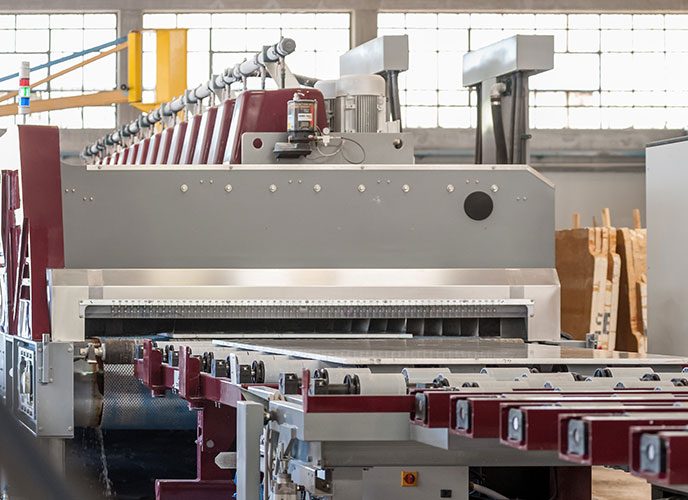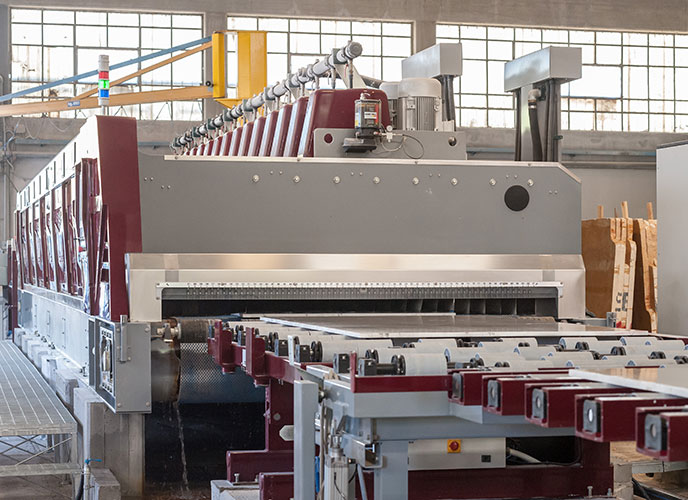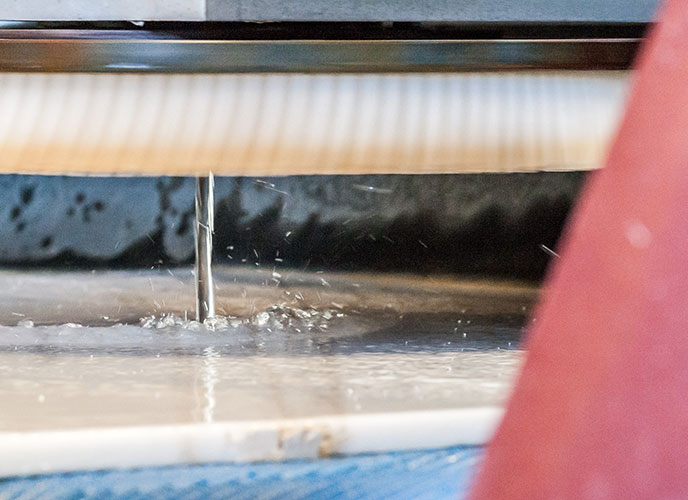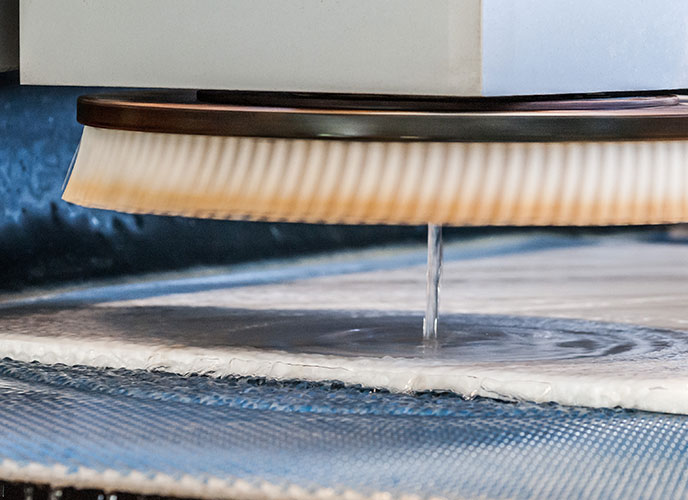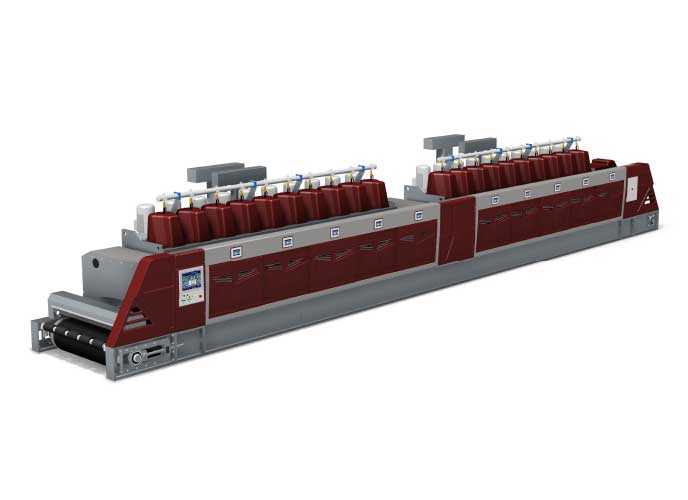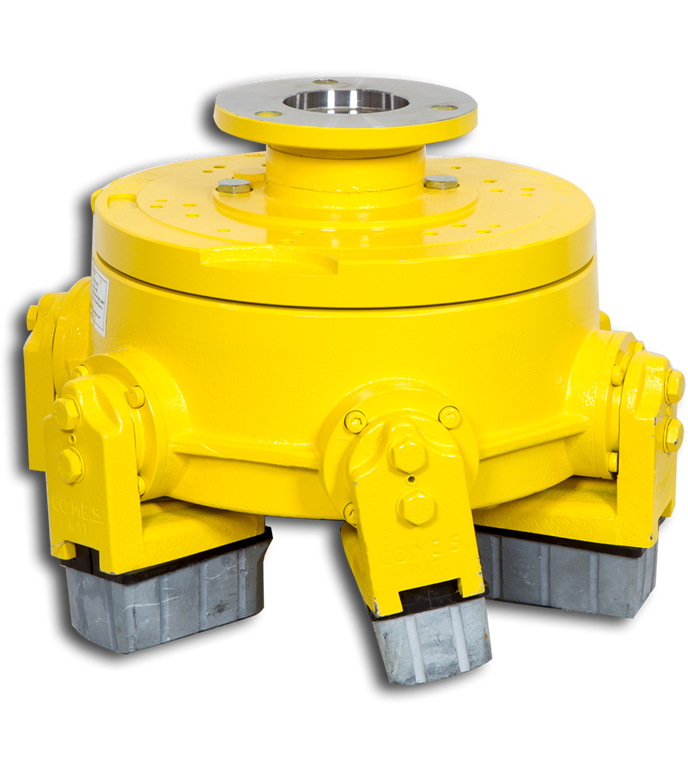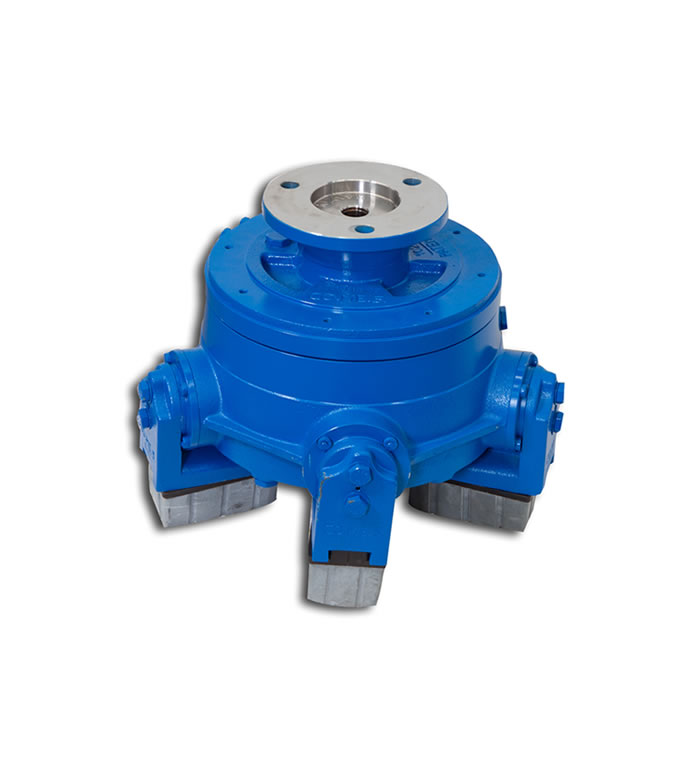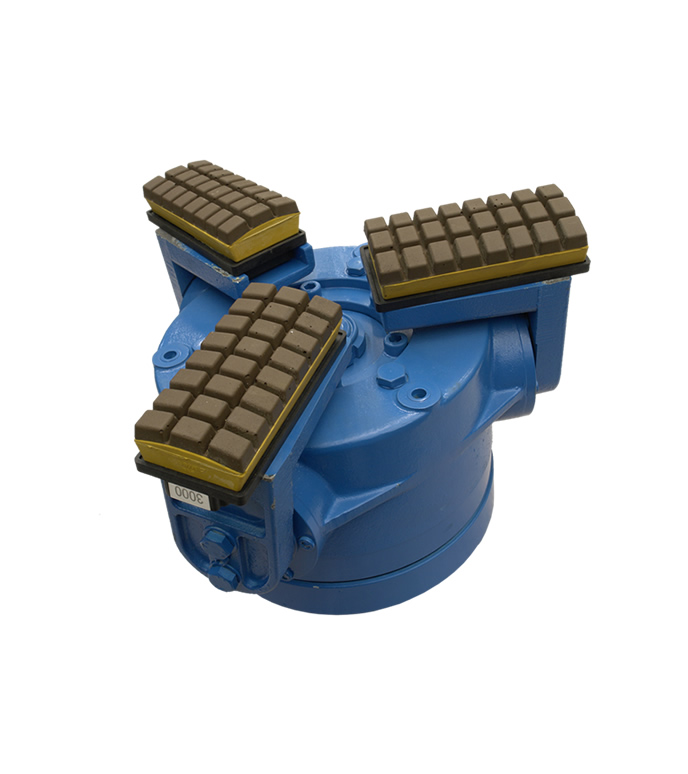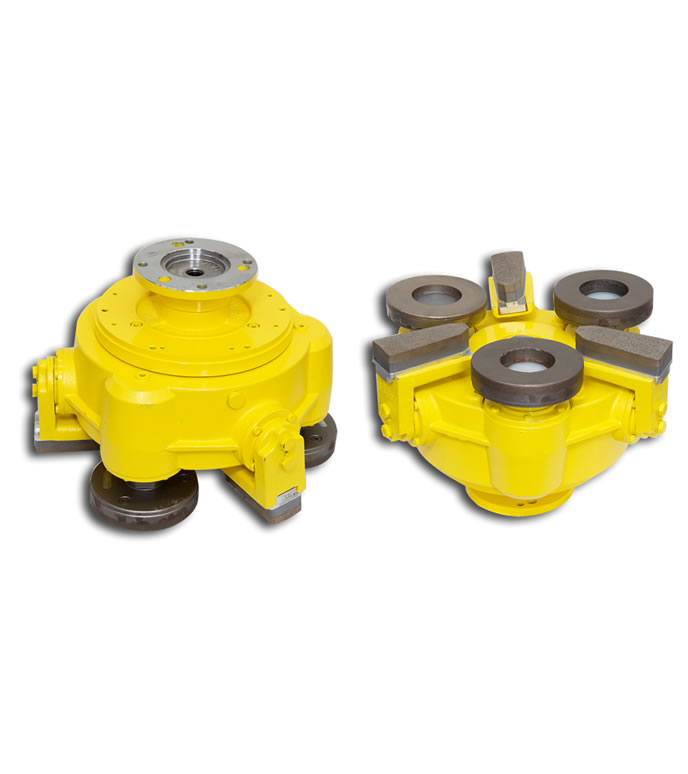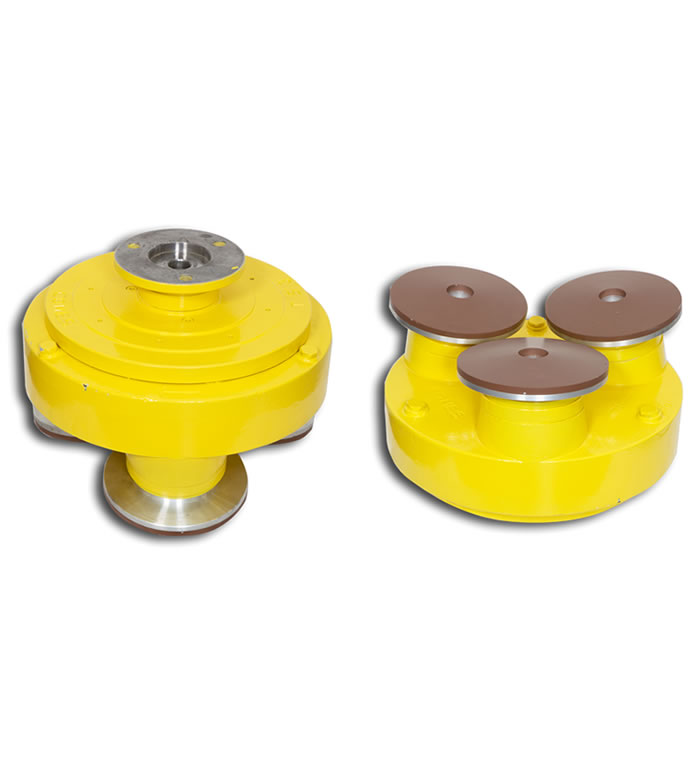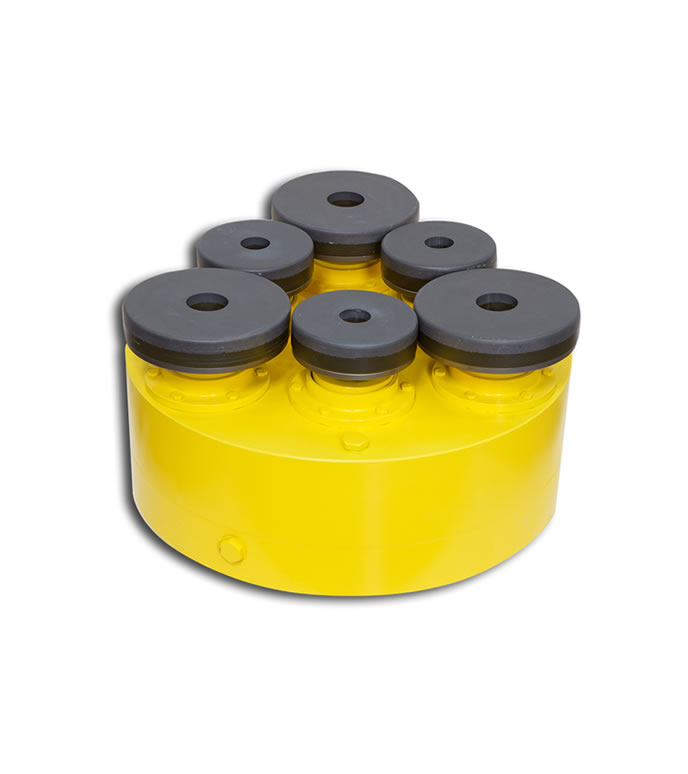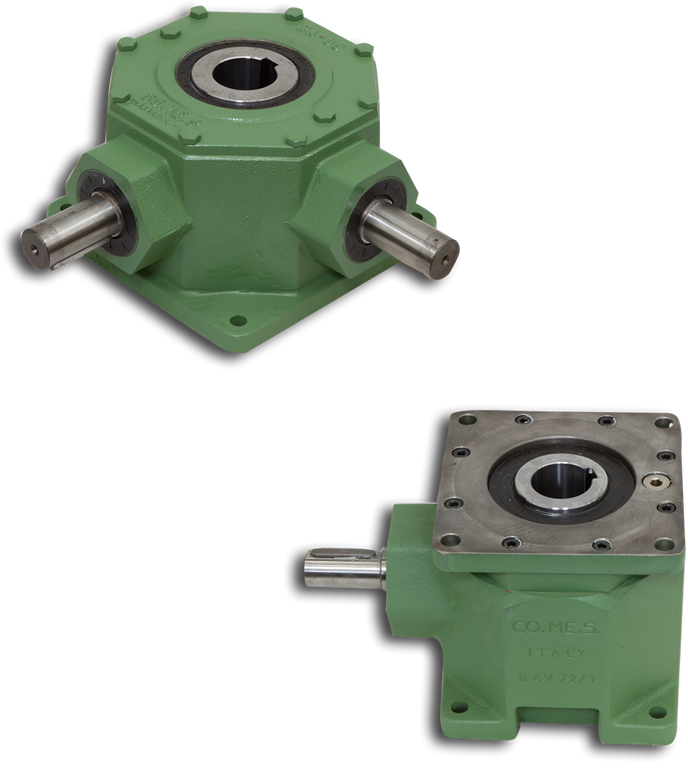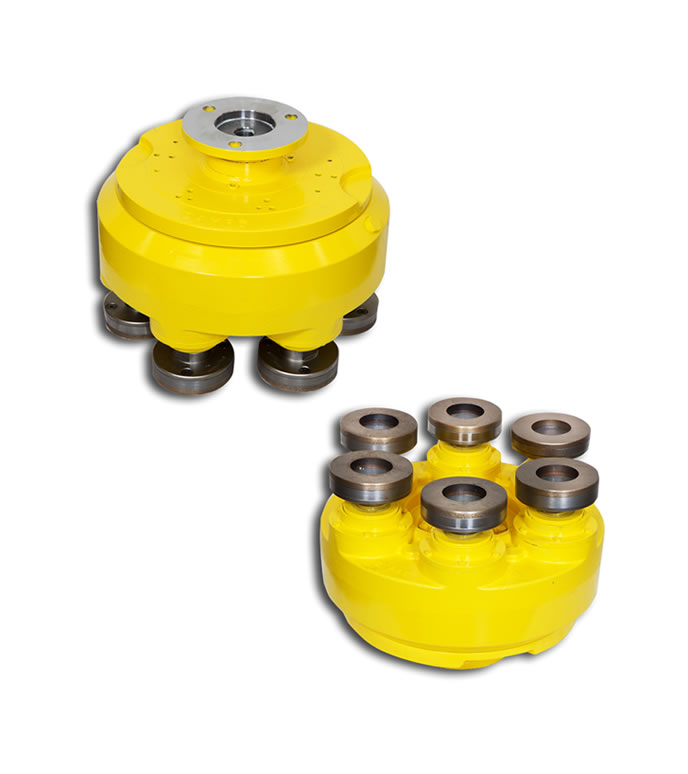EPOXY RESIN DRYING & CATALYSIS ELECTROMAGNETIC WAVE OVENS
Resin lines, and in general production plants of slabs, need:
An appropriate design
Optimize the flow of slabs
Use the proper materials
In COMES we know what we are talking about…every resin line is customized according to the type of material processed, the production required, the type of resin needed and the area available in the plant
We use the Xilex ovens ARES 3500 and KRONOS 3500 that allow us to design resin lines and marble and granite production plants with 4 in 1 versatility:
Improving the quality of the finish of the materials
prolonging the brightness
reducing processing times and costs
increasing production
With the support of Xilex, the provider of advanced radiation systems!
ARES 3500 DRY TECHNOLOGY
The use of the ARES 3500 technology allows to dry water 100% and to help later filter properly the resin without the use of vacuum, filling all cracks and holes to make the best adhesion
KRONOS 3500 HARDENING TECHNOLOGY
The use of the KRONOS 3500 technology produces a “molecular vibration” that accelerates the activation of the resin hardening. This technology, working together with an accumulator studied for this purpose, allows, with the lower cost of energy, to achieve greater filtration, penetration, and affects (light, medium, dark tones, etc.) in marble and granite. It allows to eliminate waiting times of slabs of 24-48-72 hours as it is processed, it can be polished immediately
COST
Lower energy consumption (machine doesn’t consume when it doesn’t produce
Lower resin consumption (molecular vibration allows optimal filtration of the resin)
Less processing space (NO intermediate warehouses)
Low maintenance
Low cost / m2
FEATURES
Better filtering of the resin. (does not need vacuum)
Higher resistance and brightness duration
Less breaks
Less amount of resin adapting to the desired effects (Light, dark tones, etc.)
Less curing time
Less overall processing time (allows to work IN LINE with the polisher) IN LINE PLANT CONCEPT
Less handling time
Possibility of diversity of finishes
Reduced dimension > less space occupation
Immediate operations (without preheating)
No intermediate warehouses > IN LINE process (at the end of the line the resin is fully catalysed, which allows working IN LINE with the polisher and avoid unnecessary material transport and storage)
DON’T use MW > is not dangerous for operators
Guaranteed production although the weather condition vary
Radiation + chemical: allows the best finishes after polishing
System allows the evolution to water-based resin, more ecological than current ones
Speed can be adjusted to the required production
No major foundation work are required
Download Pdf

COMESCAN
Scanning & Filing system for natural and engineered stone slabs
ComeScan is one of the most sophisticated machines for scanning and filing high-resolution colour images of slabs moving along a stone-polishing or –processing line.
Download Pdf

LOADING & UNLOADING AUTOMATIONS
One of the key components of reinforcement lines is the handling system, which must let the material move from one processing step to the next, quickly and safely. In some of CO.ME.S.’s plants specifically designed to treat extremely fragile slabs, the material is placed on the trays, gently taken through the entire process, and eventually ejected.
Download Pdf

RESIN FILLING LINES
Such equipment has been designed to soak stone slabs (mainly marble and granite slabs) with chemical resins to improve their mechanical strength and/or appearance through an entirely automatic process. The process may be summed up in these steps: feeding in the slab, priming the slab, coating the slab surface with a layer of liquid resin where needed, stacking the slab away until the resin has set, and taking the slab out.
Download Pdf

CO.ME.S. POLISHING MACHINES
The “STORM” polishing machine by CO.ME.S. is the result of the company’s 40 years of experience in manufacturing polishing heads for marble, granite and ceramic.
Design, ergonomics, performance and safety are the principles that inspire our work, so we can provide every buyer with the well-known quality of CO.ME.S.s products. Every single detail of the machine has been designed with unparalleled care.
Countless hours of design and factory tests have gone into the STORM polishing line until it met CO.ME.S. strictest standards.
Download Pdf

HTS Polishing Head
Polishing/Calibratin heads with multipurpose attachment for all kinds and models of multi-head and single-head polishing machines.
They are bought not only by end users but by lots of machine manufacturers all over the world as well.
The main advantages of these heads are:
1) The internal design has much fewer parts than the old heads. Its system (international patent for COMES’ Storm) for driving the swinging arm, using a differently-sloping cogged gear (instead of cams), avoids any clearance that could prevent the arms swinging evenly and consistently in both directions (as opposed to cam-based systems); such accuracy also prevents consumables (diamonds and abrasives) wearing out unevenly, thereby saving money and delivering excellent polishing results.
2) Easy, cheap maintenance. Fewer parts, a simple design and the fact that one half, if not actually just over one half, of them are commercial parts, so they can be found at any retailer or specialist shop all over the world, will save time and money (parts without a code next to the exploded view in the manual are commercial parts).
3) Flexibility and adaptability of the head, even on flawed surfaces once cut (for granite) or once baked (for ceramics) or specially corrugated (for ceramics, special engravings are provided in the moulds). This is because of the 12 heavy-duty steel ‘springs’ (see exploded view, part no. 69) that make the head extremely flexible as well as equally effective and powerful on surfaces that need to be gauged or polished.
4) All mechanical parts are lubricated by just one type of lubricant. They use either grease type 00 or oil, as shown in the list we provide or as written on a table on the head.
STORM 5 Polishing Head
Polishing/Calibrating head with multipurpose attachment for all kinds and models of multi-head and single-head polishing machines.
They are bought not only by end users but by lots of machine manufacturers all over the world as well.
The main advantages of these heads are:
1) The internal design has much fewer parts than the old heads. Its system (international patent for COMES’ Storm) for driving the swinging arm, using a differently-sloping cogged gear (instead of cams), avoids any clearance that could prevent the arms swinging evenly and consistently in both directions (as opposed to cam-based systems); such accuracy also prevents consumables (diamonds and abrasives) wearing out unevenly, thereby saving money and delivering excellent polishing results.
2) Easy, cheap maintenance. Fewer parts, a simple design and the fact that one half, if not actually just over one half, of them are commercial parts, so they can be found at any retailer or specialist shop all over the world, will save time and money (parts without a code next to the exploded view in the manual are commercial parts).
3) Flexibility and adaptability of the head, even on flawed surfaces once cut (for granite) or once baked (for ceramics) or specially corrugated (for ceramics, special engravings are provided in the moulds). This is because of the 12 heavy-duty steel ‘springs’ (see exploded view, part no. 69) that make the head extremely flexible as well as equally effective and powerful on surfaces that need to be gauged or polished.
4) All mechanical parts are lubricated by just one type of lubricant. They use either grease type 00 or oil, as shown in the list we provide or as written on a table on the head.
STORM 3 Polishing Head
Polishing/Calibrating head with multipurpose attachment for all kinds and models of multi-head and single-head polishing machines.
They are bought not only by end users but by lots of machine manufacturers all over the world as well.
The main advantages of these heads are:
1) The internal design has much fewer parts than the old heads. Its system (international patent for COMES’ Storm) for driving the swinging arm, using a differently-sloping cogged gear (instead of cams), avoids any clearance that could prevent the arms swinging evenly and consistently in both directions (as opposed to cam-based systems); such accuracy also prevents consumables (diamonds and abrasives) wearing out unevenly, thereby saving money and delivering excellent polishing results.
2) Easy, cheap maintenance. Fewer parts, a simple design and the fact that one half, if not actually just over one half, of them are commercial parts, so they can be found at any retailer or specialist shop all over the world, will save time and money (parts without a code next to the exploded view in the manual are commercial parts).
3) Flexibility and adaptability of the head, even on flawed surfaces once cut (for granite) or once baked (for ceramics) or specially corrugated (for ceramics, special engravings are provided in the moulds). This is because of the 12 heavy-duty steel ‘springs’ (see exploded view, part no. 69) that make the head extremely flexible as well as equally effective and powerful on surfaces that need to be gauged or polished.
4) All mechanical parts are lubricated by just one type of lubricant. They use either grease type 00 or oil, as shown in the list we provide or as written on a table on the head.
MIX Calibrating Head
The MIX head is a revolution in the mechanics of polishing heads, as it has 3 satellites and 3 fickert arms that work on the surface all at the same time .
Such mechanism has been designed to respond to 2 problems that may occur when polishing granite:
1 – The deep marks left on the surface by the satellite heads in the first few stations of the polishing machines.
2 – The need to use several stations after the calibrating heads, with diamond tools on fickert heads, to the detriment of the finish.
The MIX head, with its 3 satellites and 3 flickert units:
a) remarkably reduces the section of the material, even at zero pressure, thus acting as a veritable calibrating head.
b) its 3 flickert units, despite calibrating at the same time as the satellites, act as limit switches for the satellites, thus removing the marks left by the aggression of the satellite tools and helping achieve excellent levelling results.
c) as a consequence, because the material is so well levelled out and free of any of the usual deep marks, diamond consumption on the next stations is optimised, so fewer flickert type heads need to be used and the material is already finished by the consumable abrasives. Which, of course, adds value to the material.
TS3 Calibrating Head
The TS3 head has been designed to finish granite and ceramic surfaces once gauged by calibrating heads or rolls.
You may even use it as an excellent calibrating head if you add coarse-textured diamond tools.
But it has been specifically designed and developed to finish surfaces that have been gauged by aggressive tools.
As everyone knows, the calibrating process carried out in the first few polishing stations by aggressive tools to remove material or by diamond rolls or radial heads (especially before granite-strip polishing machines or ceramic polishing machines) leaves more or less deep marks, and the surface is not always perfectly gauged and levelled out. That is why the TS3 has been designed to finish and improve the work of the calibrating heads.
The 3 satellites are 200 mm in diameter, with a marked slope, so it can work not on just one point of the satellite (as opposed to the standard satellite calibrating heads with 5 or 6 satellites, 150 mm in diameter) but all across the radius of the tool, which, with its marked slope, will touch up the surface of the material with a large section of the tool (all across the radius) and very powerfully (steep slope). Obviously, any surface marks and flaws are further gauged and levelled out, thus providing a perfect, flawless planar surface, as well as optimising the use of diamond on the next heads, helping save some stations and start off even before using abrasives for the finishing/polishing process. This means more abrasives are used in the finishing process. So, in other words, the TS3 helps improve not only the calibrating results but also the glossy finish of the material.
3+3 Calibrating Head
3 +3 is a radial head costutuita from 6 trees on which the tool holder can be mounted ebrasivi, resin or diamond polishing stone and porcelain tiles.
It is this two ductile iron crankcase. Gears and internal gears made of special materials heat-treated.
The thrust of work is held by flange motorcycle transmission. The fixed flange to keep only the pair of reaction without being stuck rigidly to rorpo machine.
The key feature of this head is the strength of all components designed to withstand very demanding applications and extreme operating conditions.
3 +3 your head allows you to work across a large area of the other heads, with the possibility of changing the operating points from the three external tools.
The 3+3 puts in combined rotation 6 different tools and each of them has a different point of contact, with 6 different contact inclinations with regard to the reference radial that passes through the centre of the tools and the centre of the head.
Therefore there are 6 different working signs, that tend to cross each other and combine rotation and the lateral move of the head system.
RAV 99 Angular Gearbox
REDUCTION GEARS AND SPEED VARIATORS
The gearboxes and other speed up,
together with the grinding heads, the range of products CO.ME.S.
They are made of different types and sizes can be used on any type of machine tool, particularly with specific use in plants for processing marble and granite.
ANGULAR REDUCTION GEARS.
The gearboxes are used in the corners of frames and stone cutters.
They are manufactured in sizes (RAV 54-72-99-120) with one or more lines of input (RAV /1-2) and are particularly suited to withstand high loads on the axis of output.
The housing containing bevel gears is made of nodular cast iron and have a base with slotted holes that allow easy positioning.
The bevel gear with helical teeth Gleason is of high quality steel hardened, tempered and rolling of tapered roller bearings.
RAV 120 Angular Gearbox
REDUCTION GEARS AND SPEED VARIATORS
The gearboxes and other speed up,together with the grinding heads, the range of products CO.ME.S.
They are made of different types and sizes can be used on any type of machine tool, particularly with specific use in plants for processing marble and granite.
ANGULAR REDUCTION GEARS.
The gearboxes are used in the corners of frames and stone cutters.
They are manufactured in sizes (RAV 54-72-99-120) with one or more lines of input (RAV /1-2) and are particularly suited to withstand high loads on the axis of output.
The housing containing bevel gears is made of nodular cast iron and have a base with slotted holes that allow easy positioning.
The bevel gear with helical teeth Gleason is of high quality steel hardened, tempered and rolling of tapered roller bearings.








